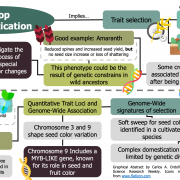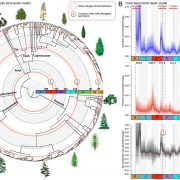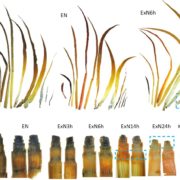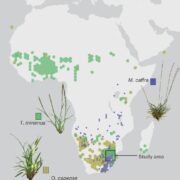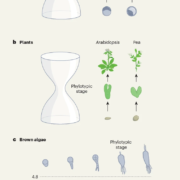Completing the whole puzzle of whole genome duplications in land plants
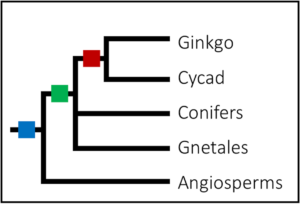 A hot topic in plant evolutionary biology is whole genome duplications (WGDs), in which an organism copies its entire genetic dataset. Having double the required DNA is often viewed as detrimental but can be useful in times of rapid environmental change. Recently, the role of WGDs during plant evolution was reviewed, further linking times of environmental uncertainty, such as the K-Pg extinction that led to the demise of the dinosaurs, to the apparently synchronous diversification in the flowering angiosperms. In the other, often neglected, lineages of land plants, such as the non-flowering gymnosperms of which only around ~1 000 extant species remain, evidence for WDGs are less prevalent. In 2015, a study largely focusing on the conifers identified duplication events that may have coincided with the Permian-Triassic boundary, the most severe mass extinction event in Earth’s history, and to which the survival of the conifers may be accredited. Additionally, the authors found a relatively recent WGD in one genera of the Gnetales lineage, Welwitschia, but no such event in the other extant genera of this lineage was identified. Evidence for WGDs in the remaining two gymnosperm lineages, Ginkgo biloba (the sole survivor of the Ginkgoales lineage) and the cycads remained uncertain. Recently however, the search for WGDs in all lineages of land plants identified an ancient WGD in G. biloba and the cycads. Interestingly, this duplication event seemed to be shared between these two lineages, as it appeared to have occurred in an ancestor of both the cycads and ginkgo before speciation occurred. What is even more remarkable is that the remnants of such ancient events can still be identified in the genomes of species alive today, indicative of both the slow evolutionary rate of some organisms and the value of high quality genetic data.(Summary by Danielle Roodt Prinsloo) PLOS ONE. 10.1371/journal.pone.0184454
A hot topic in plant evolutionary biology is whole genome duplications (WGDs), in which an organism copies its entire genetic dataset. Having double the required DNA is often viewed as detrimental but can be useful in times of rapid environmental change. Recently, the role of WGDs during plant evolution was reviewed, further linking times of environmental uncertainty, such as the K-Pg extinction that led to the demise of the dinosaurs, to the apparently synchronous diversification in the flowering angiosperms. In the other, often neglected, lineages of land plants, such as the non-flowering gymnosperms of which only around ~1 000 extant species remain, evidence for WDGs are less prevalent. In 2015, a study largely focusing on the conifers identified duplication events that may have coincided with the Permian-Triassic boundary, the most severe mass extinction event in Earth’s history, and to which the survival of the conifers may be accredited. Additionally, the authors found a relatively recent WGD in one genera of the Gnetales lineage, Welwitschia, but no such event in the other extant genera of this lineage was identified. Evidence for WGDs in the remaining two gymnosperm lineages, Ginkgo biloba (the sole survivor of the Ginkgoales lineage) and the cycads remained uncertain. Recently however, the search for WGDs in all lineages of land plants identified an ancient WGD in G. biloba and the cycads. Interestingly, this duplication event seemed to be shared between these two lineages, as it appeared to have occurred in an ancestor of both the cycads and ginkgo before speciation occurred. What is even more remarkable is that the remnants of such ancient events can still be identified in the genomes of species alive today, indicative of both the slow evolutionary rate of some organisms and the value of high quality genetic data.(Summary by Danielle Roodt Prinsloo) PLOS ONE. 10.1371/journal.pone.0184454


